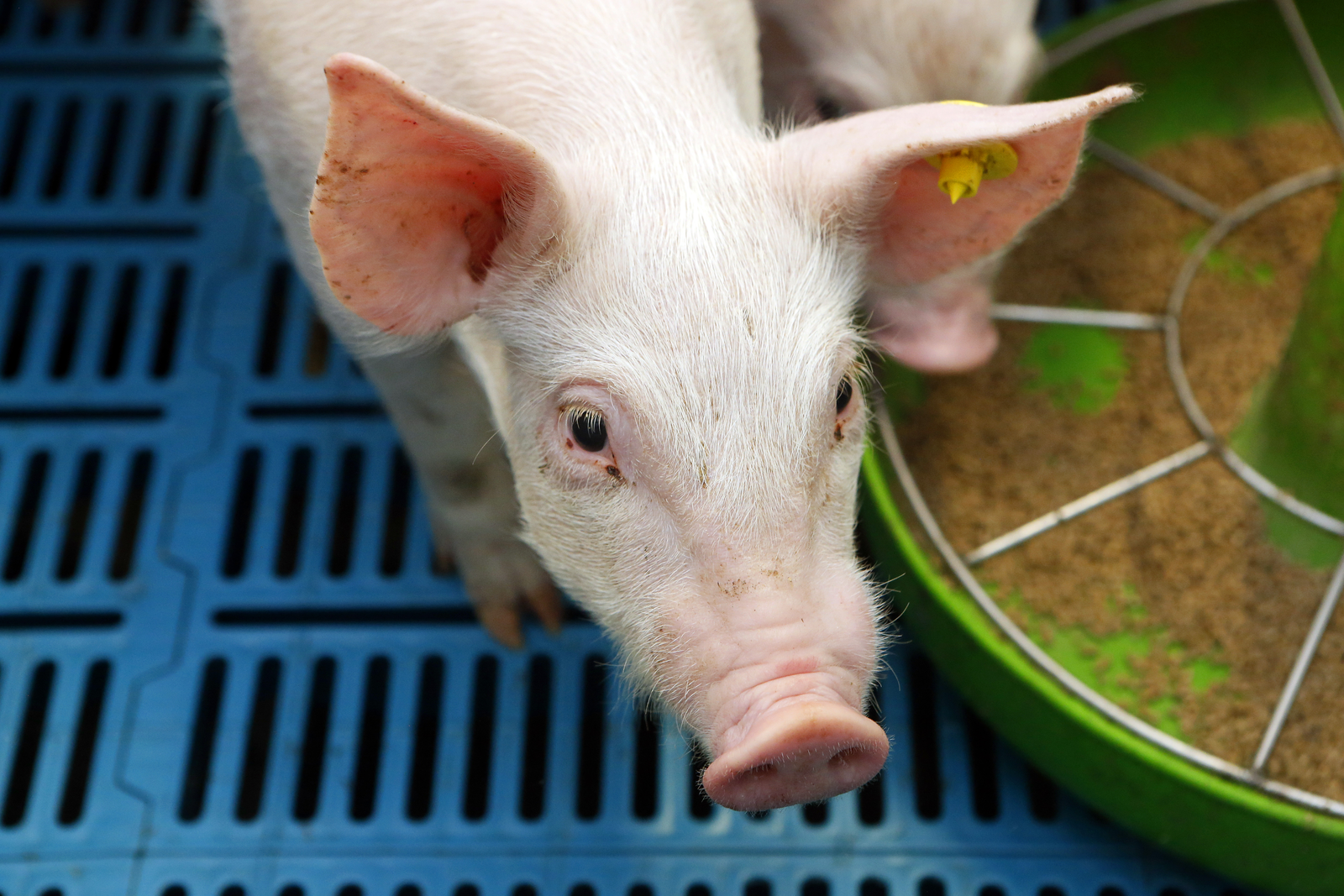Algae and clay to improve nutrient utilisation

A combination of algae extracts and clay minerals has shown to increase natural enzymatic digestion in the small intestine, a key factor for optimal nutrient utilisation. Here we share some recent data on pigs from a trial performed by INRA.
Digestive enzymes need to be in contact with their substrate in order for hydrolysis to occur. The physico-chemical interactions of the enzymes with clay particles seem to enhance the contact between the digestive enzymes and the feed, making clays a good support matrix for enzymes and serving as a meeting point for them to have contact with their substrate.
Indeed, clay-enzyme complexes are formed at enteric pH values. These active stable complexes are resistant to proteolysis and increase the amount of active digestive enzymes in the intestine, thus improving nutrient digestibility. It has been observed that clay supplementation in different animal species increases digestive enzymatic activity: higher pancreatic lipase activity in rats supplemented with Kaolinite, increased digestive enzymatic activity in the small intestine in broilers supplemented with Montmorillonite, and increased protein and energy retention coefficients for growing pigs supplemented with clay.
Some studies also suggest that the increased activity of enzymes that are in contact with clay not only comes from their stabilisation, but also from the presence of cofactors in the clay. Cofactors are helper molecules that are required for enzymes to be active. They can be organic or inorganic; most commonly vitamins in the former case and metallic ions in the latter. Clays are layered mineral materials that are composed of a succession of aluminium and silicon-based sheets, the order of which varies according to the type of clay. In Montmorillonite, various metallic ions replace some aluminium and silicon ions in the structure. Known as the substitution phenomenon, this event provides Montmorillonite part of its physico-chemical reactivity. Moreover, the presence of metallic ions may contribute to the activation of some enzymes, through their action as cofactors. For example, copper is known to activate lipase and phospholipase A and zinc is a required cofactor of carboxypetidase, to mention only a few examples.
Algae-clay synergy
The combination of the matrix support provided by the clay and the cofactor effect coming from the metallic ions present in its structure can be referred to as biocatalysis: the improvement of performance of a biochemical reaction through the action of an external compound, i.e. a biocatalyst. Clay structures can be modified and associated with other materials in order to potentiate their biocatalytic properties. Such technology has been developed by the Olmix group (France) within the framework of its research programme conducted on algae and clays. The micronised form of the product developed* allows a fine dispersion of the product in the intestine,
providing many sites of reaction for enzymatic digestion with more easily accessible metal ions. Moreover, it benefits from a synergy between clay and algae in the process of biocatalysis, as algae bring in many diverse metallic ions, sometimes absent in the feed, which are required cofactors for the activation of several enzymes. This unique combination of algae and clay makes this product a unique tool to boost enzymatic activities through the action of biocatalysis.
Proven efficacy, improved ileal digestibility performance of pigs
Based on the above-mentioned technology, the product has proven its efficacy in several studies. In a recent study conducted by INRA Saint-Gilles (French National Institute for Agronomic Research), it successfully improved the ileal digestibility performance of growing pigs. In order to evaluate the ileal digestibility performance of the animals, five pigs (average weight of 30 kg) underwent ileorectal anastomosis (removal of the large intestine) and were placed in individual cages (Figure 1). Three weeks after surgery, the pigs received the three diets of the study consecutively, following a Latin square model: the standard diet (control), the standard diet supplemented with 0.1% of algae-clay mix (MFeed+) and a low protein and low energy diet (LP-LE) used to estimate endogenous losses.
None of the studied diets contained exogenous enzymes. Ileal and standardised digestive utilisation coefficients (CUD) were calculated for dry matter (DM), organic matter (OM), nitrogen (N), CF (crude fibre), NDF/ADF (neutral detergent fibre/acid detergent fibre), (gross energy) GE and amino acids (AA). Variations due to the different diets in the Ileal and Standarised CUD were calculated using the ANOVA test. PRO MIXED SAS software was used to conduct all statistical analysis with a significant level of 5%. When compared with the standard diet, the MFeed+ diet presented significantly increased the Apparent Ileal Digestive Utilisation Coefficient (%) of gross energy (GE), dry matter (DM) and organic matter (OM), respectively being (+3.4%, P ≤ 0.05), (+3.4%, P ≤ 0.01), and (+3.1%, P ≤ 0.01) (Figure 1). The MFeed+ diet also showed a significantly increased Standardised Ileal Digestive Utilisation Coefficient (%) for ∑ Non essential Amino acids (+3.8%, P ≤ 0.01), Lysine (+3.6%, P ≤ 0.01) and Threonine (+5.3%, P ≤ 0.01) (Figure 2).
Conclusion, algae extracts and clay minerals improve efficacy of digestive enzymes
Feed cost is currently the most important input cost in animal production systems. In order to accomplish a maximum zoo-technical and health performance in this economic scenario, the improvement of nutrient digestibility is paramount. This study proves that the addition of a mix of algae extracts and clay minerals improves the efficacy of digestive enzymes, allowing a better use of the diet and helping reduce the cost of production.
* MFeed+. References are available on request.
Local regulations should be consulted concerning the status of this product in the country of destination. All information only for export outside Europe.











